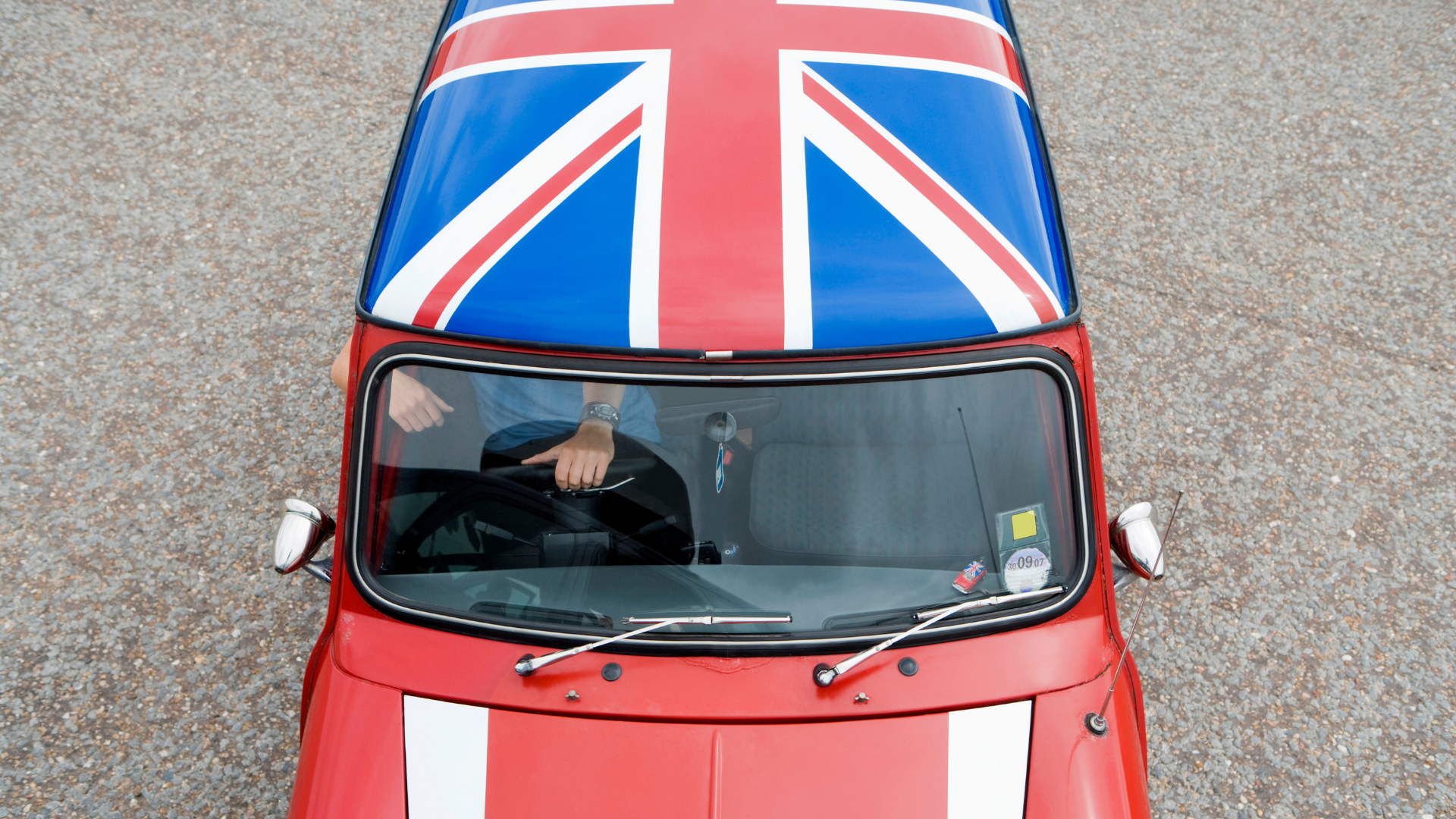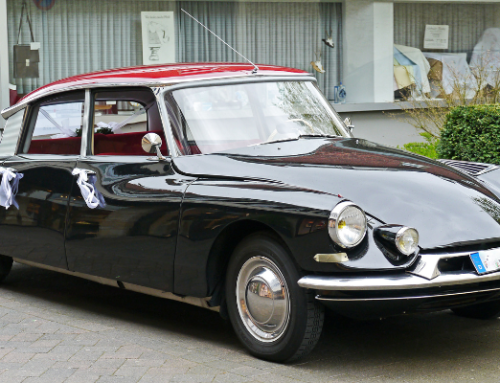Step back in time and rev up your engines as we journey through the fascinating history of classic cars in the United Kingdom. From the early innovations that paved the way for mass mobility to the iconic marques and models that have become cultural landmarks, the British automotive industry has been a trailblazer in both design and engineering. Whether you’re a car aficionado or simply curious about how the UK carved its unique path in the world of wheels, this blog is your roadmap to understanding the rich tapestry of British motoring. Buckle up as we explore the ups and downs, the triumphs and tragedies, and the enduring legacy of classic cars in the British Isles.
The Early Beginnings: How the UK’s Automotive Industry Took Off
The British automotive industry has roots going back to the late 19th century, with innovators like Herbert Austin and William Morris taking the lead in manufacturing automobiles for the masses. During the early 1900s, British car manufacturers focused on quality and craftsmanship, often creating custom-built models that were reserved for the wealthy elite. However, as technology progressed, cars became more accessible, sparking a transportation revolution across the British Isles.
The significance of the UK automotive industry was not only economic but also cultural. By the 1920s, cars had become a status symbol, leading to the development of iconic brands like Rolls-Royce, Bentley, and Aston Martin. The widespread adoption of cars changed the landscape of the UK, giving rise to a network of roads, service stations, and even the motorway system, which is still in use today.
The Second World War had a profound impact on the British car industry, as many factories were repurposed for military production. However, the post-war era saw a resurgence in consumer demand, catalysing the golden age of British motoring that lasted through the mid-20th century.
Rolling in Royalty: The Influence of Classic British Cars on Popular Culture
The British automotive industry has long been intertwined with the country’s cultural fabric. From James Bond’s Aston Martin to the Mini Cooper’s association with the Swinging Sixties, British cars have often found themselves at the intersection of popular culture and technological innovation. Celebrities and royalty alike have been seen cruising in British classics, solidifying their status as cultural icons.
The Rolls-Royce has been synonymous with luxury and is often the vehicle of choice for British royalty. Meanwhile, sports cars like the Jaguar E-Type and the Aston Martin DB5 became symbols of a young, affluent, and stylish generation that emerged in the 1960s. Cars like these became more than just modes of transportation; they were markers of a cultural revolution that was taking place.
Even in modern media, the allure of the classic British car endures. The Mini Cooper made a memorable appearance in the 2003 film “The Italian Job,” and Jaguars continue to feature in British spy films. It’s clear that these automobiles are not just relics from the past; they are enduring symbols of British culture and sophistication.
British Marques and Their Seminal Models: A Historical Overview
Throughout its history, the British automotive industry has produced some of the world’s most beloved and enduring marques. Brands like Land Rover, Bentley, Aston Martin, and Lotus have created models that not only stood the test of time but also revolutionized the automobile industry. Take, for example, the Land Rover Series I, which launched in 1948 and laid the foundation for all modern SUVs.
Then there’s the Mini, which debuted in 1959 and changed the game in terms of what a small car could offer. Created by the British Motor Corporation (BMC), the Mini was designed to be fuel-efficient yet spacious, setting a new standard for compact cars. Other iconic British models include the Aston Martin DB5, which was launched in 1963 and became an instant classic, thanks in part to its association with James Bond films.
The story of British marques is also a story of innovation. Lotus, for instance, has been a pioneer in incorporating lightweight materials and aerodynamic designs, influencing both racing and consumer cars. The importance of British car brands extends far beyond the UK’s borders, as their influence can be seen in automotive design and technology around the world.
The Golden Age of British Racing and Classic Sports Cars
The UK has a rich history in motorsports, with tracks like Silverstone and Brands Hatch gaining global recognition. During the 1950s and 1960s, often considered the golden age of British racing, drivers like Stirling Moss and Jim Clark became household names. British teams and manufacturers were dominant forces in competitions like Formula One and Le Mans, with marques like McLaren and Jaguar achieving numerous victories.
In this period, the relationship between British racing achievements and commercial automobiles was incredibly strong. Success on the track often translated into consumer interest, with many manufacturers offering ‘road-legal’ versions of their racing models. Sports cars like the Jaguar D-Type and the Austin-Healey 3000 were highly influenced by their racing counterparts, featuring high-performance engines and aerodynamic designs.
The golden age of British racing also had a ripple effect on the culture and economy of the UK. Motorsports became a significant part of British entertainment, and manufacturers often used racing success as a marketing tool to boost sales and international prestige. Brands that had success on the racetrack saw a concurrent rise in consumer interest, affirming the symbiotic relationship between racing and road cars.
The Formation and Impact of British Leyland: A Controversial Merger
British Leyland was formed in 1968 through the merger of Leyland Motor Corporation and British Motor Holdings, bringing under one umbrella several iconic British marques such as Jaguar, Rover, and Mini. The merger was initially seen as a strategic move to create a stronger, more unified British automotive industry that could compete globally. However, it was not without its challenges and controversies.
The company faced a myriad of issues, including labour disputes, quality control problems, and financial difficulties. Various models produced under British Leyland, such as the Austin Allegro and the Morris Marina, were met with a lukewarm reception and are now often cited as examples of the downfall of the British car industry. Despite its vast resources and talent, British Leyland struggled to produce cars that could compete effectively in a rapidly changing global market.
The long-term impact of British Leyland on the UK automotive industry is a subject of debate among historians and enthusiasts. While the company did produce some successful models, like the Range Rover and Triumph TR7, its legacy is often overshadowed by its failures and eventual decline. The dissolution of British Leyland in the 1980s marked the end of an era and led to the sale of individual brands to foreign companies, forever changing the landscape of the British automotive industry.
British Luxury Cars: The Rise of Rolls-Royce, Bentley, and Aston Martin
When it comes to luxury, few do it better than the British. Brands like Rolls-Royce, Bentley, and Aston Martin have defined what luxury motoring means, with an emphasis on craftsmanship, bespoke design, and unparalleled comfort. Rolls-Royce, for example, became the epitome of British luxury with its Silver Ghost model, launched in 1907, which was described as “the best car in the world” at the time.
Bentley, another stalwart of British luxury, made its name not just through opulence but also performance. Winning the prestigious 24 Hours of Le Mans multiple times in the 1920s helped cement the brand’s reputation as a maker of fast, reliable, and luxurious cars. Aston Martin took a similar path, offering vehicles that combined high-performance capabilities with sumptuous interiors and an attention to detail that was second to none.
The impact of these luxury car brands has been monumental, both in the UK and abroad. While they represent only a small fraction of total car sales, their influence extends far beyond their customer base. As status symbols and works of art, these cars continue to serve as aspirational models for automotive enthusiasts worldwide, symbolizing the best of British design and engineering.
The Death of Rover: An End to an Era for the British Automotive Industry
The Rover brand was one of the oldest and most respected names in British motoring history, with roots dating back to the early 20th century. Over the years, Rover produced a wide range of cars, including luxury sedans, sports cars, and even pioneering SUVs like the Range Rover. However, by the late 20th century, Rover found itself struggling to compete in an increasingly globalized market.
The brand went through a series of ownership changes and alliances, each aimed at revitalizing its product line-up and financial standing. Despite some successes, such as the launch of the Rover 75, the company could not escape its mounting problems. Poor quality, outdated designs, and a lack of investment led to declining sales and market share.
In 2005, the Rover Group went into administration, marking the end of the line for one of Britain’s oldest car manufacturers. The closure of Rover was not just a corporate failure but also a significant cultural event, signalling the decline of British car manufacturing as a whole. While some of the brand’s legacy lives on in models produced under other names, the demise of Rover served as a cautionary tale for the British automotive industry, demonstrating the need for innovation and adaptability in a changing market.
Reviving the Classics: The Modern-day Appreciation and Restoration of British Classic Cars
In the face of the decline and restructuring of the British automotive industry, a passionate community of enthusiasts has emerged, dedicated to preserving and enjoying classic British cars. Clubs, events, and restoration projects abound, offering classic car owners a space to share their love for these historic machines. Many restoration shops and specialists focus solely on British classics, indicating a robust market for these vintage vehicles.
Modern technology has also aided in the revival of these classics. With the advent of 3D printing and other advanced manufacturing techniques, parts that were once difficult to find can now be recreated with precision. Classic British cars are also increasingly seen as valuable investments, with models like the Aston Martin DB5 and the Jaguar E-Type fetching astronomical prices at auctions.
This renaissance of interest in classic British cars serves as a testament to the enduring appeal of the country’s automotive heritage. Whether it’s the thrill of driving a restored Mini Cooper or the joy of taking a vintage Bentley on a scenic tour, the love for British classics shows no signs of slowing down. As long as there are roads to drive on and stories to tell, these cars will continue to be a significant part of the UK’s cultural and automotive landscape.







Leave A Comment